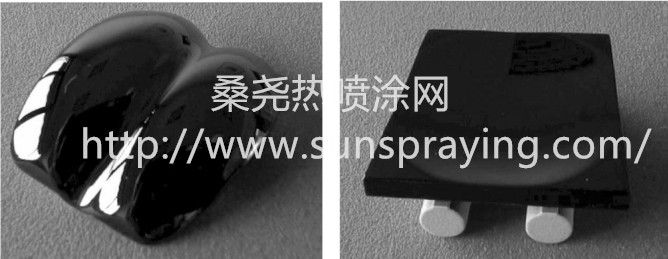Diamond-like carbon (DLC), also known as amorphous hydrogenated carbon (a-C:H), is a class of materials with excellent mechanical, tribological and biological properties. By the addition of other elements into the DLC all of these properties can be changed within a certain range. It will be shown that the ratios of the different proteins adsorbed on the surface can be influenced by the addition of different elements into the DLC film. These proteins will then subsequently influence cell attachment, cell proliferation and cell differentiation. Certain toxic elements such as Cu, Ag, V, embedded in the DLC will, when exposed to a biological media, be released and cause toxic reactions. This allows the preparation of surfaces with a tunable antibacterial effect. DLC has proven its outstanding tribological properties in many technical applications due to the transformation of DLC into graphite (a solid lubricant) and the build up of a transfer layer on the counterpart. However, it is questionable if this effect takes place in artificial joints. Contradicting results on DLC coated hip joints are found in the literature, some indicating an improvement and some a change for the worse. DLC coatings have an excellent haemocompatibility, which is expressed in a decreased thrombus formation. When exposed to blood, an increased ratio of albumin to fibrinogen adsorption as well as decreased platelet activation is observed on coated surfaces. DLC coated cardiovascular implants such as artificial heart valves and stents are already commercially available. The implantation of biomaterials into the human body allows it to re-establish biological and mechanical functions and therefore to increase the quality of life. Depending on the biomedical application, the implant has to withstand dynamical mechanical loads and has also to perform a desired long-term biological interaction with the surrounding biological tissue. The load bearing properties of the implants are mainly controlled by the bulk properties of the implant whereas the interaction with the surrounding tissue is governed by the implant surface. The implant surface influences in particular the interaction and adsorption of different proteins which, in turn, control the cell adhesion and behavior. However, the overall reaction of the body on an implant is a system property that includes many different aspects, such as surface chemistry and texture, implant movement, biodegradation and surgical aspects. The highly corrosive environment and the low tolerance of the body to some dissolution products restrict the materials to be used for implants. These are alloys based on titanium, iron (surgical steel), cobalt, chromium, nickel (may cause allergies), zirconium, tantalum, the noble metals and carbon in its different forms, as well as ceramics such as alumina and zirconia. Additionally different polymers such as PTFE (Teflon), PEEK (polyetheretherketone) and polyethylene are also used for implants. When coating an implant, the bioreactions at the implant surface and the functional properties (load bearing capacity, wear, corrosion, etc.), can be optimized separately for the workpiece and for the surface. To create a surface for desired bioreactions, a promising approach is to start from an existing biocompatible coating (to prevent inflammatory reaction or repulsion) and to alloy it with adequate elements. Additionally, it has to be considered that the bioreactions and the invivo behavior of an implant are influenced also by the surface texture as described by Boyan. Due to its bio- and haemocompatible nature, there is a growing interest in the application of DLC on orthopedic and other implants w4x. Additionally, DLC is an excellent base coating to be alloyed with different elements. The amorphous nature of DLC opens the possibility to introduce certain amounts of additional elements, such as Si, F, N, O, W, V, Co, Mo, Ti and their combinations, into the film and still maintain the amorphous phase of the coating. By this technique, different film properties such as tribological properties, electrical conductivity, surface energy and biological reactions of cells in contact with the surface can be continuously adapted to a desired value. Today, two main fields of biological applications of DLC can be seen: the application of DLC in blood contacting implants such as heart valves and stents; and the use of DLC to reduce wear in load bearing joints. However, whereas DLC coated heart valves and stents are already commercially available, the situation for DLC coated load bearing implants is contradicting.

本文由桑尧热喷涂网收集整理。本站文章未经允许不得转载;如欲转载请注明出处,北京桑尧科技开发有限公司网址:http://www.sunspraying.com/
|

